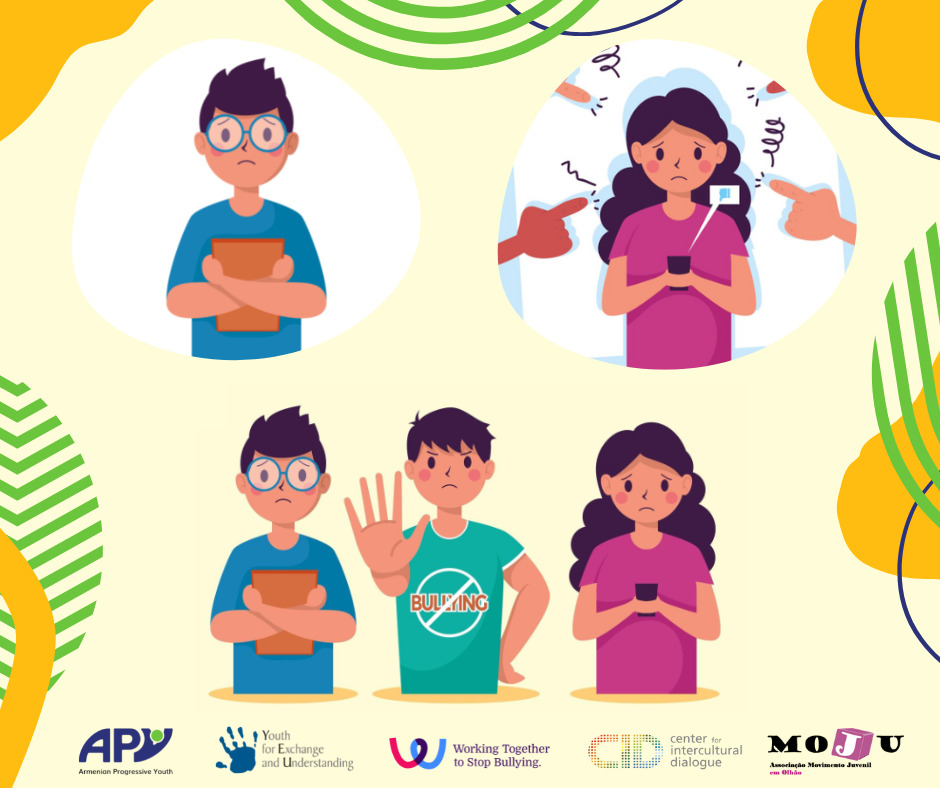
Bullying in Armenia
- Posted In :
- 0 : comment
Bullying in Armenia
The concept in general and the phenomenon in Armenia
Introduction
Bullying is using force, coercion, hurtful teasing, or threat, to abuse, aggressively dominate, or intimidate. The behavior is often repeated and habitual. One essential prerequisite is the perception (by the bully or by others) of an imbalance of physical or social power. This imbalance distinguishes bullying from conflict. Bullying is a subcategory of aggressive behavior characterized by hostile intent, imbalance of power, and repetition over a period of time. Bullying is the activity of repeated, aggressive behavior intended to hurt another individual, physically, mentally, or emotionally.
The phenomenon and the statistics of bullying
Bullying is considered an expanded phenomenon and an educational, social, and personal critical problem, as well as negatively affecting the school environment in general, and the cognitive, emotional, and social ground of the student in particular, which affects his/her right to learn within a proper safe class environment.
Almost one-third of young teens worldwide have recently experienced bullying, according to data released for the first time by the UNESCO Institute for Statistics (UIS).
The new data shows that bullying affects children everywhere, across all regions and countries of different income levels. Bullying refers to violence between peers/students which is characterized as “intentional and aggressive behavior occurring repeatedly where there is a real or perceived power imbalance.”
Bullying in Armenia, experts say, derives from stereotypical thinking, and intolerance towards those who differ from the majority and deviate from the norms accepted in society.Most often people are bullied on the basis of gender identity and sexual orientation. Some research findings show that most of the Armenian population believes that the rights of homosexuals should be limited, which leads to their oppression.
According to research conducted in 2015, 52% of boys in Armenia are subjected to bullying, i. e. physical or psychological violence (mockery, humiliation).
Bullying is divided into several types: physical bullying (beating, heating), verbal, or psychological bullying (mockery, etc). Bullying victims are mostly people who have not found their place in society, or those who have certain physical, external defects, big nose, and so on.
“The types of violence are different. Among them is bullying This is a childhood violence that is ignored,” says Aida Muradyan, World Vision Child Protection and Education Program Coordinator. Victoria Ohanyan, Head of UNICEF Access to Justice Program, says that the role of teachers is most importantly to prevent violence between children. “The problem is that children think that this is a normal phenomenon, they can ridicule to the other, and the one who is bullied believes that he has to endure,” says Victoria Ohanyan.
In ‘’Pathways to socioeconomic health differences in Armenian adolescents: The role of bullying perpetration’ study, 13.6% of students reported at least one episode of bullying perpetration in the past couple of months. The majority of perpetrators were boys (72.9%), younger than 15 years of age (80.5%), and were more likely to be bullied themselves compared to non-perpetrators. Bullying victimization was consistently associated with increased odds of poor health outcomes.
The notion of bullying is not widely recognised in Armenia. Many children and teenagers struggle with bullying almost every day at school, but it is often considered a natural part of growing up.
Action plans against bullying
Bullying has been reported to be a significant public health concern in Armenia, with a lack of measures to prevent it, which can result in severe and long-lasting mental health consequences for victims. However, the way socioeconomic status (SES), bullying, and adolescent health relate or interact in Armenia has not been studied.
Unfortunately, for adolescents from low-SES families, bullying can be a way to achieve a higher position in the peer hierarchy and feel better, whether through improved control and social participation or relieved status anxiety. For high-SES adolescents, on the other hand, social, emotional, or psychological problems may increase the risk of bullying perpetration. Consequently, bullying prevention activities in Armenia should focus on both low and high-SES adolescents, considering SES-specific pathways and mechanisms.
There have never been any programs to prevent bullying or to train teachers on the issue.
How can parents help?
Explain to your child that it isn’t their fault that they have become a victim. The self-esteem of your child would have been considerably damaged with constant bullying and you need to tell them that it’s not because of who or what they are. The problems actually exist with the bullies themselves. Appreciate your child for discussing the problem with you and assure them that by telling the truth they have also saved other children, as further bullying would be prevented.
Your child also needs to know how to avoid the situation of bullying. You can suggest to them that they switch restrooms and go to a different one from the bully. Ask your child to make up a buddy system through which they are not alone whenever they are in the hallway. Explain to your child that reacting with tears and anger doesn’t help because it encourages the bully. Once the bully realizes that the victim is no longer getting upset, they will get bored. By pretending that the bully is invisible, you can make bullying boring for the bully. This requires practice but it is very effective.

Apy
August 2nd, 2022 View Profile